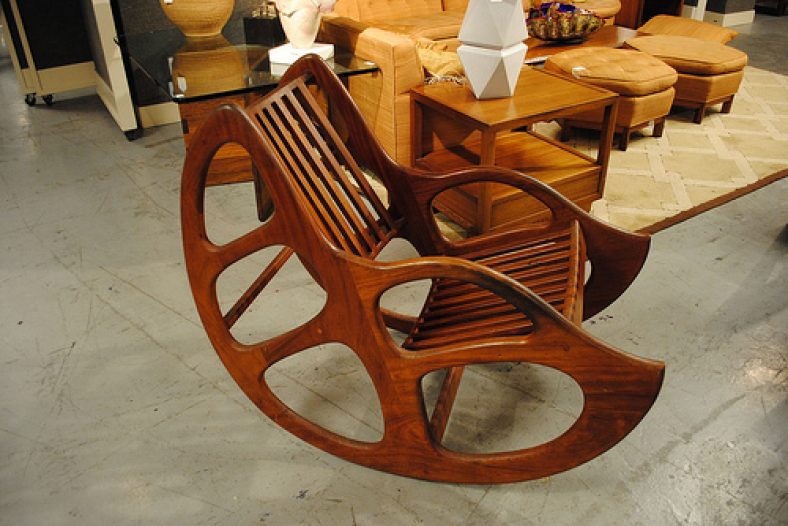When it comes to home furniture, there is very little as beautiful as good, solid wood. There is something about a mahogany dining table, or a teak dresser or an oak bookcase that speaks of luxury, comfort and style. Unfortunately, wood is something of an ecological hot potato. Deforestation is a serious problem around the world and manmade plantations aren’t quite the happy solution we’d like to think.
What does this mean for people with a yen for wood? Is there a way in which we can have our solid wood dining suite and accessories without compromising our green principles?
Well, is there?
The answer is yes – if you’re prepared to put in a little work. We’re not talking about the kind of hard, manual work where you have to get comfortable with power tools and sawdust. Instead, we’re talking about research. Take the time to arm yourself with information regarding the sustainability of wooden furniture and you can, indeed, enjoy fine dining upon a fine wooden platform.
To save you some time, we’re going to give you some basics, and point you towards some reputable resources for additional information.
Good to know
Wood is renewable, almost by definition. After all, we plant and grow new trees all the time. The problem is that we don’t approach logging in an entirely sustainable way. According to an article on Gaiam Life by Geoff Davis, Kim Astin and Michelle Lee, modern logging practices rely on clearcutting, which is when a natural forest is clearcut (all the trees and other vegetation are removed), the land is “treated” to prevent anything that isn’t a tree from growing, and a single new variety of tree is planted.
It’s sort of based on the idea of one-for-one; one tree cut = one tree planted, but it’s not that simple. For one thing, the natural forest that was cleared contained a diversity of trees and vegetation that supported a wealth of life. They’re replaced by one variety, planted in uniform rows and the land is treated with chemical herbicides to eliminate other “messy” plant life that will get in the way of tree felling machinery. So the practice falls well short of the theory.
Fortunately, there are some ethical logging companies out there which work with sustainability in mind. They work in carefully managed forests, in which, according to Davis, Astin and Lee, trees are carefully selected before they are felled. Every effort is made to ensure that a diversity of trees, of varying ages, remains and special care is taken to ensure that no other vegetation is damaged during the felling process, and to ensure that the soil remains healthy and fertile.
Patience is a key factor in sustainable logging because instead of waiting a mere 7 – 10 years to reap new trees, loggers wait up to 30 years to allow for proper regrowth.
Forest Stewardship Council
You can find ethical companies on the Forest Stewarship Council (FSC), which is dedicated to promoting responsible forest management globally, and aims to help consumers make informed decisions about wood products. It does this by providing timber-related companies with highly sought after certification (through local FSC accredited certification bodies), provided the companies meet the council’s strict criteria for forest management and environmental, social and economic sustainability.
Companies seeking certification need to abide by the 10 FSC Principles, which include protecting and upholding indigenous peoples’ rights, maintaining and improving local communities’ social and economic well-being, and maintaining or restoring the local ecosystem (including biodiversity, resources and landscapes). The principles apply to natural forests as well as plantations.
There are two main types of certification:
1) Forest management certification for forest managers and owners.
2) Chain of custody certification for manufacturers, processors and traders.
The FSC website is full of interesting and valuable information and is well worth a look if you’re in the market for some new wood furniture.
More wood furniture buying tips
Additional tips to ensure that your wooden furniture is ethical and sustainable include:
- Look for products made from reclaimed or “rediscovered” wood. Essentially, this is recycled or forgotten wood. So, tables are made from doors, or scarred old wooden chairs are given a facelift and reborn as modern deck chairs.
- Don’t buy products made from endangered wood, like mahogany, teak and redwood. Friends of the Earth keeps a catalogue of different types of wood, including each type’s threat classification (critically, endangered, endangered, vulnerable and lower risk). It lists trees from all over the world, so you’ll find information about local varieties.
- Buy second-hand furniture. Many pawn shops and second-hand stores contain a treasure trove of old wooden furniture of surprisingly good quality. It might need a lick of sandpaper and maybe a coat of varnish, but what’s a little elbow grease compared to the state of the world’s forests?
Featured images:
License: Creative Commons
image source
Jemima Winslow dreams of living in the woods in a log cabin with lovingly handcrafted wooden furniture. Unfortunately, her wood-working skills are next-to-nothing and her father has retired his saw. So she scours second-hand stores for wooden bookcases and tables that have earned their character. Chipboard pieces need not apply.

